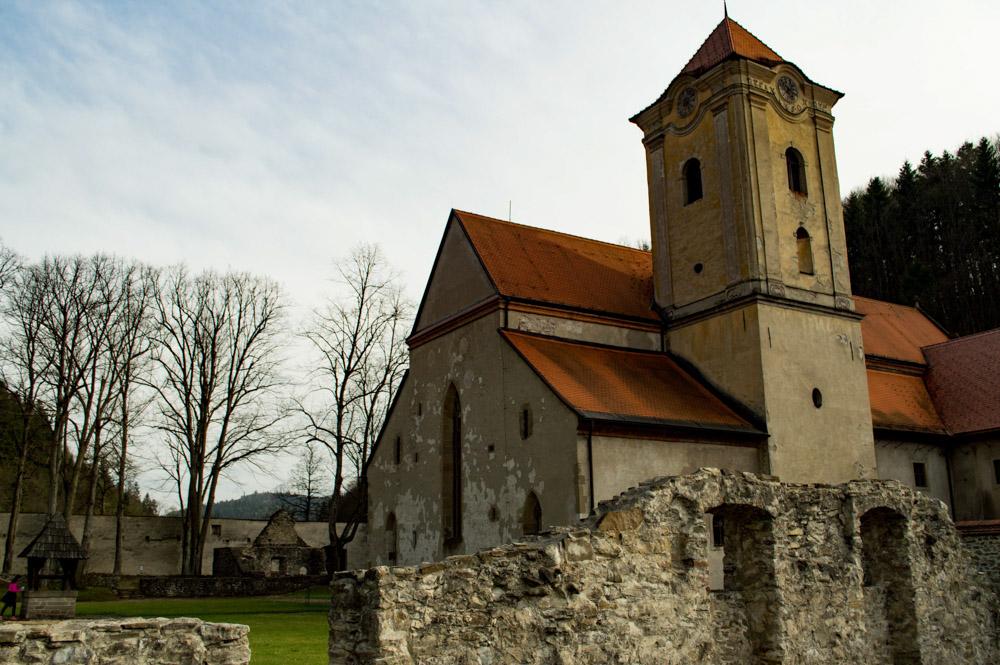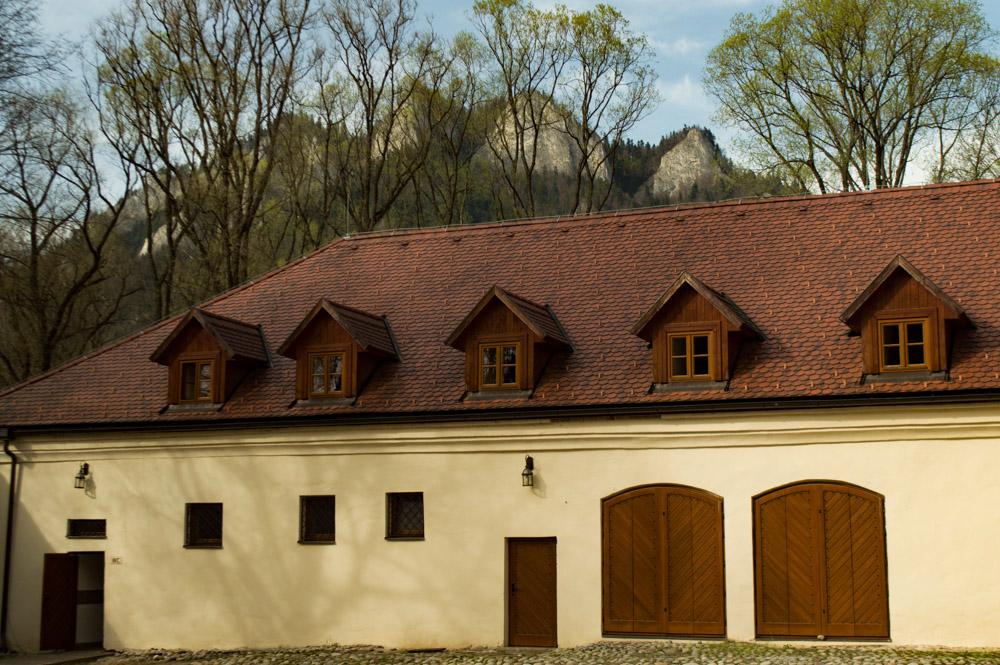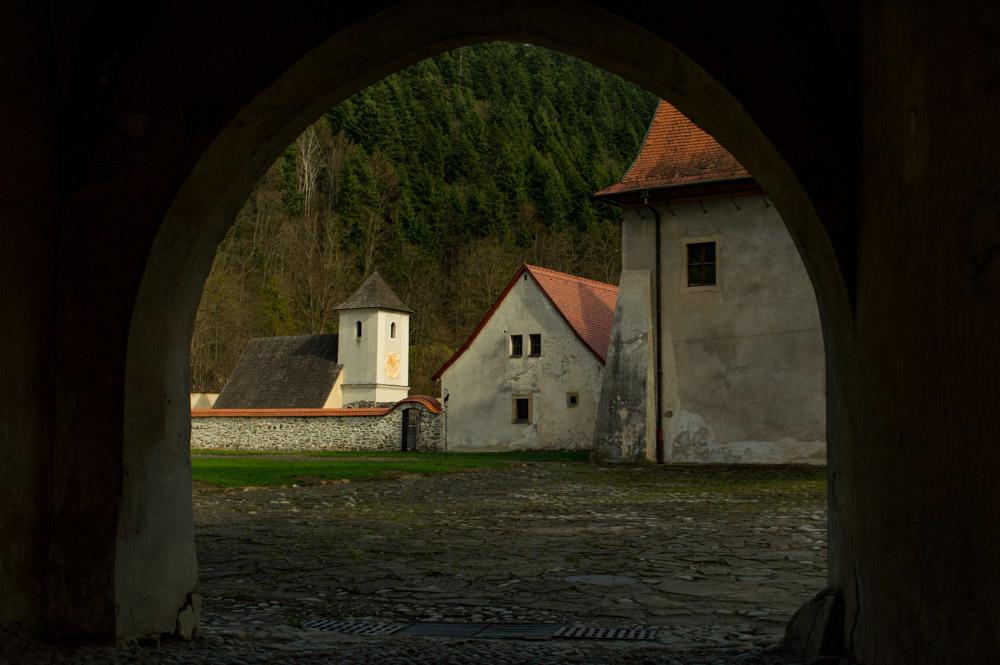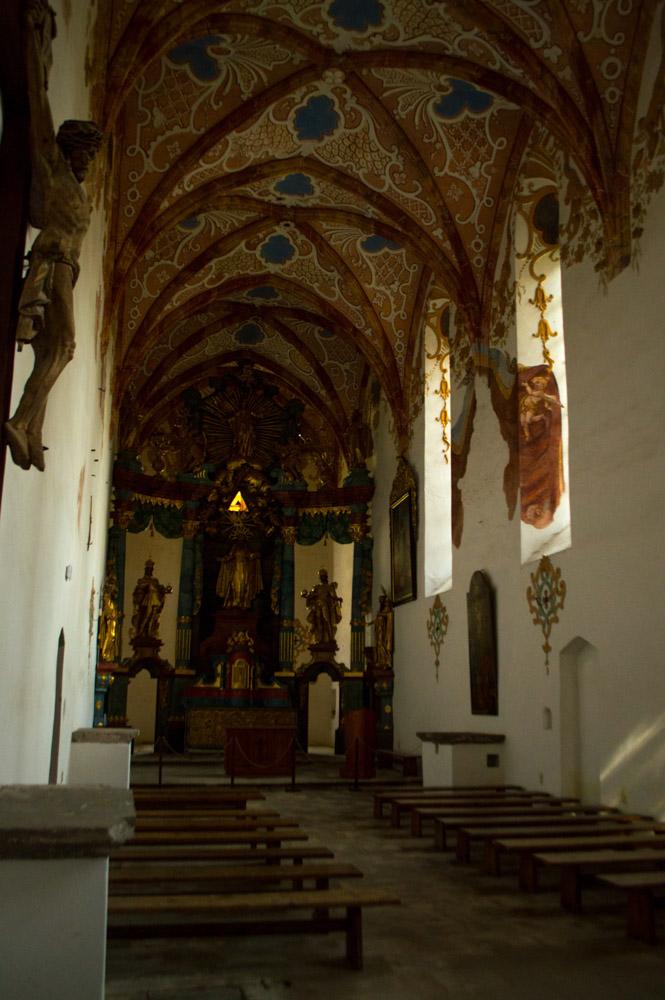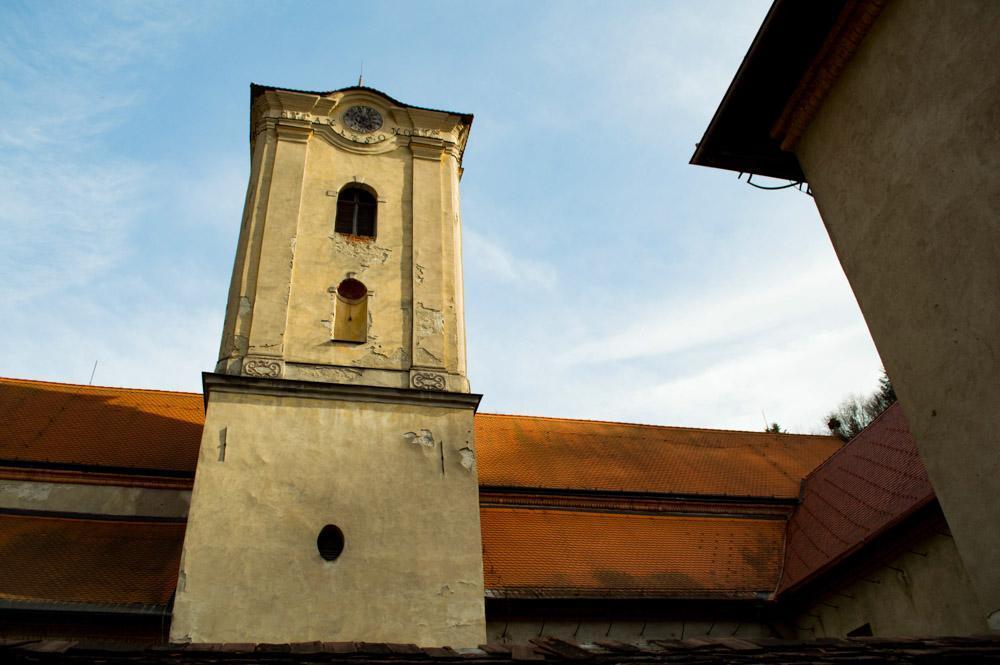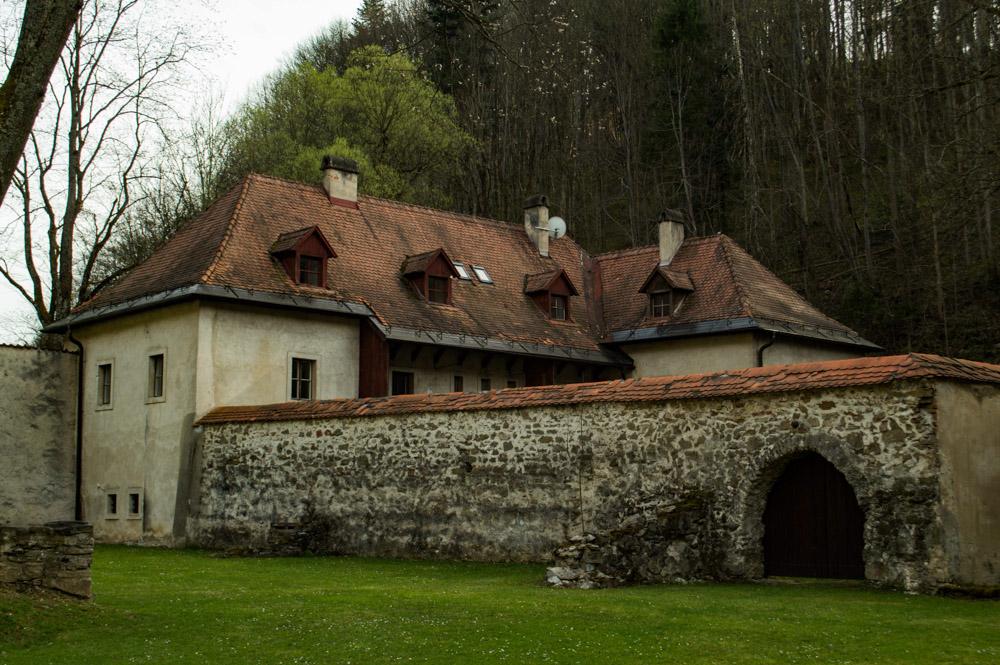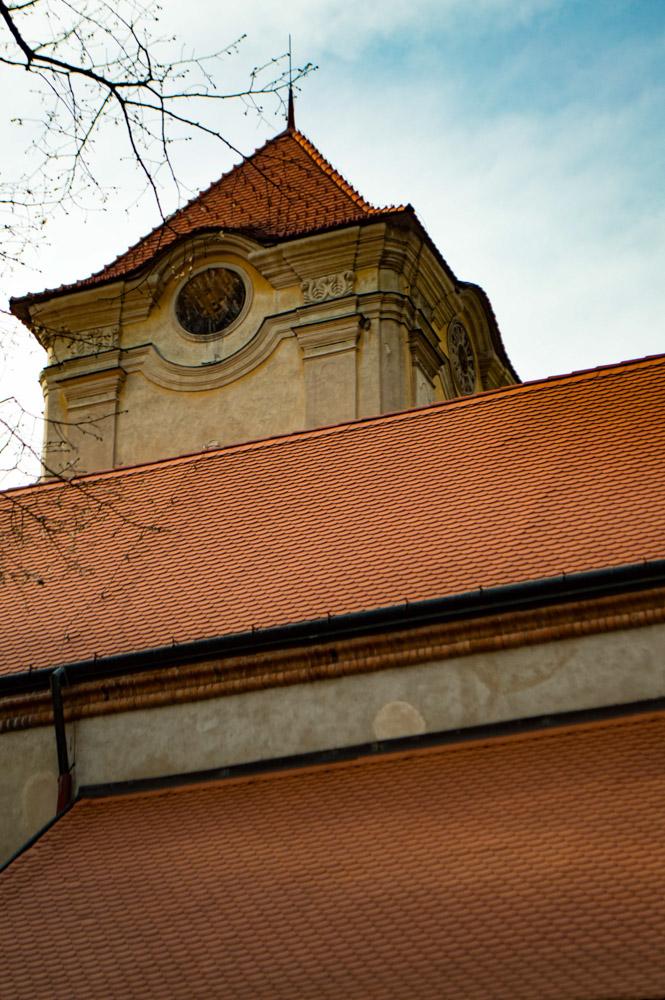Just setting foot within the first courtyard of Červený Kláštor (the Red Monastery) it is evident why this place inspired legends. The orderly cobblestone underfoot and the warm hues of the tiled roofs and crumbling walls gave the impression of sanctuary against the wild green chaos around. Even though many people sat in the first courtyard with drinks outside an on-site pub, the monastery commanded a certain silence, a permanent sort of peace.
The beginnings of what stands today were erected in 1320, though it has only seen a religious use for about, cumulatively, 300 years since then. The first monks to worship within its halls were the Carthusians who built it. However, their order faced troubles after the Protestant reformation and the monastery was closed in 1567, purchased by a secular nobleman.
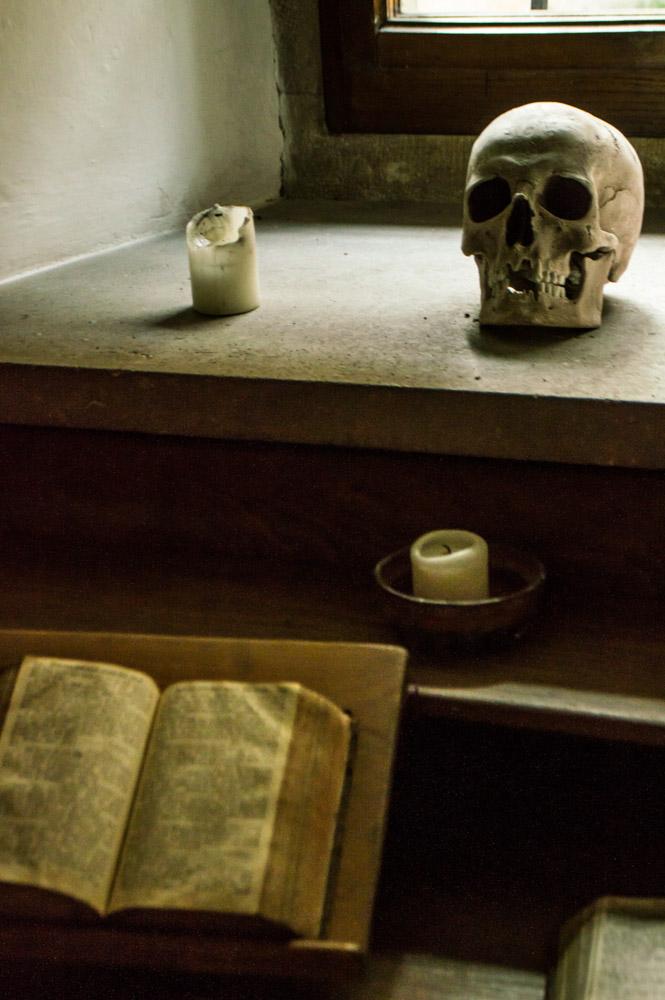
Religious life returned to Červený Kláštor in 1711 when the Camaldulian order of monks took up residence. They were a very strict order, living reclusively beneath vows of silence and heavy, self-imposed workloads. The Camaldulians at Červený Kláštor were healers and gardeners, growing herbs to make medicine. The most famous of the monastery’s residents earned his reputation through regionally renowned healing.
Father Cyprian’s most important work was his 1766 Herbarium containing 283 herbs from the Pieniny and Tatra Regions. Yet, legends arose abound him for more than just his study as a physician and botanist. Cyprian also kept the most well known and trusted pharmacy in all of Austro-Hungary. He created household items for the monastery and surrounding villages, like candles and mirrors, as well as practiced alchemy. His seeming endless knowledge impressed the locals and was passed down to generations well after his death. Legends grew about “Flying Cyprian”, stating the monk had donned a glider of his own creation and flew from the highest peak of the Three Kings to the Tatra mountains beyond.
Červený Kláštor is the first monastery that I have visited. Frankly, it impressed me more than any cathedral I have seen. There is something honest in the modest architecture and barren halls. The location itself seemed to express how unnecessary the grand superficiality of more prominent churches is compared to a labor of generations of monks which built it to be a functional and useful place of worship. This monastery helped people through healing and bestowing useful goods. To me that is a hundred times greater than any ornate, towering steeples.
Signed,
Andrew
